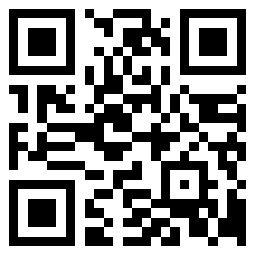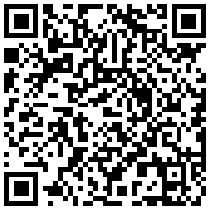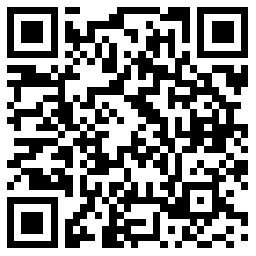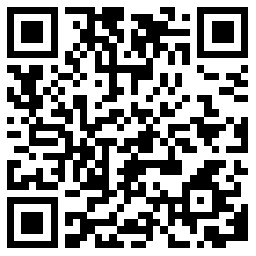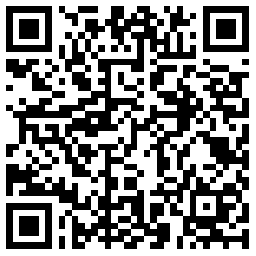Analysis of Pelvic Obliquity in Standing Position and during Walking in Patients with Different Types of Juvenile Idiopathic Scoliosis
-
摘要:
目的 评估不同类型少儿型特发性脊柱侧凸(juvenile idiopathic scoliosis, JIS)患者站立位及步行中骨盆冠状面倾斜程度的差异。 方法 回顾性纳入2020年9月—2022年12月北京协和医院JIS患者(存在脊柱侧凸且Cobb角≥10°)及同期非JIS患者(存在脊柱侧凸但Cobb角<10°)。根据站立时正位全脊柱X线片侧凸情况,将JIS患者分为存在腰椎/胸腰椎侧凸组(A组),不存在腰椎/胸腰椎侧凸组(B组)。以双侧髂嵴作为骨盆冠状面的骨性标志点,测量站立位及步行周期中双侧髂嵴高度及其变化值,以评估不同类型JIS患者骨盆冠状面倾斜程度。 结果 共入选符合纳入与排除标准的JIS患者73例(A组54例,B组19例),非JIS患者34例。A组站立位髂嵴较高侧与脊柱凸侧之间关系“合理”(腰椎/胸腰椎凸侧的髂嵴低于凹侧)的比例为61.1%(33/54),非JIS患者站立位髂嵴较高侧与脊柱凸侧之间关系“合理”(双侧髂嵴等高)的比例为38.2%(13/34),二者差异具有统计学意义(P=0.036)。B组“合理”的比例与非JIS患者无显著差异(26.3%比38.2%,P=0.380)。A组在整个步态周期中(包括支撑相最小值、支撑相最大值、摆动相最小值及摆动相最大值)双侧髂嵴高度变化值均具有统计学差异(P均<0.05),且腰椎凸侧的髂嵴高度变化值明显高于凹侧(P均<0.05),而非JIS患者和B组JIS患者在整个步态周期中双侧髂嵴高度变化值均无统计学差异(P均>0.05)。 结论 存在腰椎/胸腰椎侧凸的JIS患者站立位脊椎凸侧的髂嵴高度低于凹侧,在步行中依靠增大凸侧骨盆冠状面倾斜程度以维持身体双侧平衡。 -
关键词:
- 少儿型特发性脊柱侧凸 /
- 骨盆冠状面倾斜 /
- 步行 /
- 站立 /
- 生物力学
Abstract:Objective To analyze the correlation between juvenile idiopathic scoliosis (JIS) patients with lumbar and thoracic scoliosis and the degree of pelvis obliquity in standing position and during walking. Methods The patients with JIS(Cobb≥10°) admitted into Peking Union Medical College Hospital from September 2020 to December 2022 and non-JIS patients(Cobb < 10°) during the same period were retrospectively included. According to the results of anteroposterior X-ray of the whole spine in the standing position, JIS patients were divided into a group with lumbar/thoracolumbar scoliosis (group A) and a group without lumbar/thoracolumbar scoliosis (group B). The change value of the bilateral iliac crest height, used as osseous landmarks, was measured in standing position and during walking. Bilateral iliac crest heights and their change values were measured in standing position and during the walking cycle to analyze the degree of pelvic coronal tilt in patients with different types of JIS. Results A total of 73 JIS patients (54 patients in group A, and 19 patients in group B) and 34 non-JIS patients who met the inclusion and exclusion criteria were enrolled. In group A, 61.1%(33/54) of patients showed a "reasonable" relationship between the higher side of the iliac ridge and the convex side of the spine (the iliac ridge of the convex side of the lumbar spine/thoracolumbar spine was lower than that of the concave side), and 38.2%(13/34) of non-JIS patients showed a "reasonable" relationship between the higher side of the iliac ridge and the convex side of the spine (the iliac ridge of the convex side of the lumbar spine/thoracolumbar spine was at the same height as that of the concave side). The difference was statistically significant(P=0.036). The proportion of "reasonable" relationship in group B was not significantly different from that in non-JIS patients(26.3% vs. 38.2%, P=0.380). In group A, there were statistically significant differences in iliac crest height changes on both sides during the whole gait cycle (including minimum, maximum, minimum and maximum of the supporting phase) (all P < 0.05), and the iliac crest height changes on the convex side of lumbar spine were significantly higher than those on the concave side (all P < 0.05). However, there was no significant difference in bilateral iliac crest height between non-JIS patients and JIS patients in group B during the whole gait cycle(all P > 0.05). Conclusion In JIS patients with lumbar or thoracolumbar scoliosis, the iliac crest height of the lumbar scoliosis was lower than that of the concave side in standing position, and therefore, the tilt degree of pelvis obliquity should be increased to maintain bilateral balance during walking. -
Key words:
- juvenile idiopathic scoliosis /
- pelvic obliquity /
- walking /
- static /
- biomechanics
作者贡献:石伟宏、张宇航负责对患者进行特定性训练、数据采集及论文撰写;张慧玲、张厚强参与研究设计,并负责统计分析;杨语盈、鲁建东提供设备调试以及技术支持;陈丽霞、袁望舒负责结果解读,并指导论文修订。利益冲突:所有作者均声明不存在利益冲突 -
表 1 JIS患者与非JIS患者一般临床资料比较
组别 年龄(x±s,岁) 男性[n(%)] 身高(x±s,cm) 体质量(x±s,kg) Cobb角(x±s,°) JIS患者(n=73) 7.2±1.7 21(28.8) 136.6±12.9 29.8±7.8 13.0±4.9 非JIS患者(n=34) 7.4±1.6 16(47.1) 136.6±11.1 31.3±9.1 5.8±2.1 P值 0.418 0.064 0.997 0.390 <0.001 JIS:少儿型特发性脊柱侧凸 表 2 JIS患者与非JIS患者支撑相骨盆双侧髂嵴高度变化值的最小值和最大值比较(x±s,°)
指标 非JIS患者(n=34) JIS患者(n=73) A组(n=54) B组(n=19) 支撑相凸侧髂嵴高度最小值 -1.95±2.39 -1.31±2.24 -2.29±2.29 支撑相凹侧髂嵴高度最小值 -1.44±2.31 -2.68±2.49 -2.59±2.42 P值 0.485 0.010 0.742 支撑相凸侧髂嵴高度最大值 2.34±2.71 3.79±2.43 3.65±2.42 支撑相凹侧髂嵴高度最大值 2.99±2.29 2.22±2.42 3.85±2.68 P值 0.371 0.002 0.812 JIS:同表 1 表 3 JIS患者与非JIS患者摆动相骨盆双侧髂嵴高度变化值的最小值和最大值比较(x±s,°)
指标 非JIS患者(n=34) JIS患者(n=73) A组(n=54) B组(n=19) 摆动相凸侧髂嵴高度最小值 -3.74±2.64 -2.40±2.37 -3.74±2.64 摆动相凹侧髂嵴高度最小值 -3.66±2.59 -4.00±2.25 -3.66±2.58 P值 0.663 0.002 0.934 摆动相凸侧髂嵴高度最大值 -0.14±2.46 0.51±2.31 -0.51±2.59 摆动相凹侧髂嵴高度最大值 0.33±2.08 -0.83±1.95 0.17±1.96 P值 0.490 0.010 0.689 JIS:同表 1 -
[1] Trobisch P, Suess O, Schwab F. Idiopathic scoliosis[J]. Dtsch Arztebl Int, 2010, 107: 875-884. [2] El-Hawary R, Chukwunyerenwa C. Update on evaluation and treatment of scoliosis[J]. Pediatr Clin North Am, 2014, 61: 1223-1241. doi: 10.1016/j.pcl.2014.08.007 [3] Bondar K, Nguyen A, Vatani J, et al. The Demographics and Epidemiology of Infantile, Juvenile, and Adolescent Idiopathic Scoliosis in a Southern California Integrated Health Care System[J]. Spine (Phila Pa 1976), 2021, 46: 1468-1477. doi: 10.1097/BRS.0000000000004046 [4] Stokes IA, Burwell RG, Dangerfield PH, et al. Biomechanical spinal growth modulation and progressive adolescent scoliosis--a test of the 'vicious cycle' pathogenetic hypothesis: summary of an electronic focus group debate of the IBSE[J]. Scoliosis, 2006, 1: 16. doi: 10.1186/1748-7161-1-16 [5] Miura K, Kadone H, Koda M, et al. Thoracic kyphosis and pelvic anteversion in patients with adult spinal deformity increase while walking: analyses of dynamic alignment change using a three-dimensional gait motion analysis system[J]. Eur Spine J, 2020, 29: 840-848. doi: 10.1007/s00586-020-06312-y [6] Hu W, Song Y, Ma H, et al. Correlation Analysis of the Characteristics of Spino-Pelvic Parameters and Health-Related Quality of Life After Long-Segment Fixation for Lenke-Silva Type 5 or 6 Degenerative Scoliosis[J]. J Pain Res, 2022, 15: 2171-2179. doi: 10.2147/JPR.S368142 [7] da Silveira GE, Andrade RM, Guilhermino GG, et al. The Effects of Short- and Long-Term Spinal Brace Use with and without Exercise on Spine, Balance, and Gait in Adolescents with Idiopathic Scoliosis[J]. Medicina (Kaunas), 2022, 58: 1024. doi: 10.3390/medicina58081024 [8] Garg B, Gupta M, Mehta N, et al. Influence of Etiology and Onset of Deformity on Spatiotemporal, Kinematic, Kinetic, and Electromyography Gait Variables in Patients with Scoliosis-A Prospective, Comparative Study[J]. Spine (Phila Pa 1976), 2021, 46: 374-382. doi: 10.1097/BRS.0000000000003796 [9] Syczewska M, Graff K, Kalinowska M, et al. Influence of the structural deformity of the spine on the gait pathology in scoliotic patients[J]. Gait Posture, 2012, 35: 209-213. doi: 10.1016/j.gaitpost.2011.09.008 [10] Mak T, Cheung PWH, Zhang T, et al. Patterns of coronal and sagittal deformities in adolescent idiopathic scoliosis[J]. BMC Musculoskelet Disord, 2021, 22: 44. doi: 10.1186/s12891-020-03937-4 [11] Yi L, Houwei L, Lin W, et al. Evaluation of correlation between sagittal balance and plantar pressure distributions in adolescent idiopathic scoliosis: A pilot study[J]. Clin Biomech, 2021, 83: 105308. doi: 10.1016/j.clinbiomech.2021.105308 [12] Ploumis A, Trivedi V, Shin JH, et al. Progression of idiopathic thoracic or thoracolumbar scoliosis and pelvic obliquity in adolescent patients with and without limb length discrepancy[J]. Scoliosis Spinal Disord, 2018, 13: 18. doi: 10.1186/s13013-018-0166-y [13] Ferland CE, Sardar ZM, Abduljabbar F, et al. Bilateral vascularized rib grafts to promote spinopelvic fixation in patients with sacral agenesis and spinopelvic dissociation: a new surgical technique[J]. Spine J, 2015, 15: 2583-2592. doi: 10.1016/j.spinee.2015.08.066 [14] 袁望舒, 陈丽霞, 沈建雄, 等. 青少儿特发性脊柱侧凸保守治疗协和分型系统[J]. 协和医学杂志, 2022, 13: 1012-1019. doi: 10.12290/xhyxzz.2022-0092 [15] Mirelman A, Shema S, Maidan I, et al. Gait[J]. Handb Clin Neurol, 2018, 159: 119-134. [16] Kim DS, Park SH, Goh TS, et al. A meta-analysis of gait in adolescent idiopathic scoliosis[J]. J Clin Neurosci, 2020, 81: 196-200. doi: 10.1016/j.jocn.2020.09.035 [17] Yilmaz H, Zateri C, Kusvuran Ozkan A, et al. Prevalence of adolescent idiopathic scoliosis in Turkey: an epidemiological study[J]. Spine J, 2020, 20: 947-955. doi: 10.1016/j.spinee.2020.01.008 [18] Ridderbusch K, Spiro AS, Kunkel P, et al. Strategies for Treating Scoliosis in Early Childhood[J]. Dtsch Arztebl Int, 2018, 115: 371-376. [19] Miura K, Kadone H, Koda M, et al. Thoracic kyphosis and pelvic anteversion in patients with adult spinal deformity increase while walking: analyses of dynamic alignment change using a three-dimensional gait motion analysis system[J]. Eur Spine J, 2020, 29: 840-848. doi: 10.1007/s00586-020-06312-y [20] Schreiber S, Parent EC, Hill DL, et al. Patients with adolescent idiopathic scoliosis perceive positive improvements regardless of change in the Cobb angle-Results from a randomized controlled trial comparing a 6-month Schroth intervention added to standard care and standard care alone. SOSORT 2018 Award winner[J]. BMC Musculoskelet Disord, 2019, 20: 319. doi: 10.1186/s12891-019-2695-9 [21] Negrini S, Donzelli S, Aulisa AG, et al. 2016 SOSORT guidelines: orthopaedic and rehabilitation treatment of idiopathic scoliosis during growth[J]. Scoliosis Spinal Disord, 2018, 13: 3. doi: 10.1186/s13013-017-0145-8 [22] Banno T, Yamato Y, Hasegawa T, et al. Impact of pelvic obliquity on coronal alignment in patients with adolescent idiopathic scoliosis[J]. Spine Deform, 2020, 8: 1269-1278. doi: 10.1007/s43390-020-00145-x [23] Park HJ, Sim T, Suh SW, et al. Analysis of coordination between thoracic and pelvic kinematic movements during gait in adolescents with idiopathic scoliosis[J]. Eur Spine J, 2016, 25: 385-393. doi: 10.1007/s00586-015-3931-0 -


 作者投稿
作者投稿 专家审稿
专家审稿 编辑办公
编辑办公 邮件订阅
邮件订阅 RSS
RSS


 下载:
下载:





